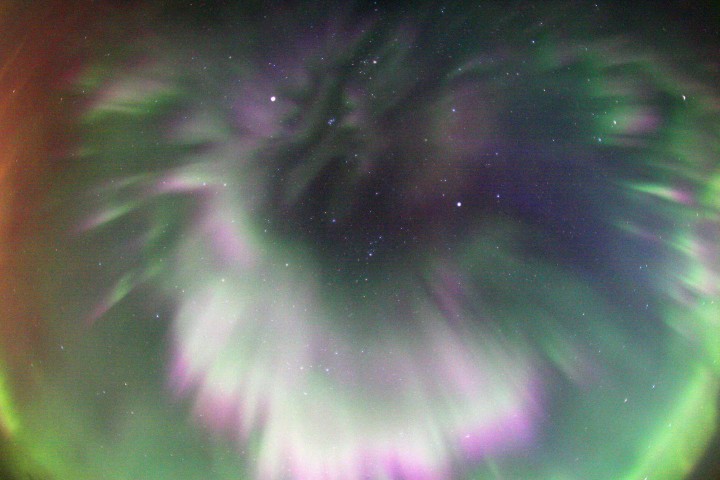Credit & Copyright: Philippe Moussette
Explanation:
So far, the Aurora Borealis or
Northern
Lights have made some
remarkable visits to
September's skies.
The reason, of course, is the
not-so-quiet Sun.
In particular, a large solar active region now crossing
the Sun's disk has produced
multiple, intense flares and a large coronal mass ejection
(CME) that
triggered wide spread auroral activity just last weekend.
This
colorful example
of spectacular curtains of aurora
was captured with a fish-eye lens in skies over Quebec, Canada
on September 11.
Also featured is the
planet Mars, the brightest
object above and left center.
Seen near Mars (just below and to the right) is the tightly knit
Pleiades star cluster.
Although they can appear to be quite close,
the northern lights actually originate at extreme altitudes,
100 kilometers or so above the Earth's surface.
1999 2000 2001 2002 2003 2004 2005 2006 2007 2008 2009 2010 2011 2012 2013 2014 2015 2016 2017 2018 2019 2020 2021 2022 2023 2024 2025 |
Yanvar' Fevral' Mart Aprel' Mai Iyun' Iyul' Avgust Sentyabr' Oktyabr' Noyabr' Dekabr' |
NASA Web Site Statements, Warnings, and Disclaimers
NASA Official: Jay Norris. Specific rights apply.
A service of: LHEA at NASA / GSFC
& Michigan Tech. U.
|
Publikacii s klyuchevymi slovami:
aurora - Mars - pleiades - severnoe siyanie - Mars - Pleyady - polyarnoe siyanie
Publikacii so slovami: aurora - Mars - pleiades - severnoe siyanie - Mars - Pleyady - polyarnoe siyanie | |
Sm. takzhe:
Vse publikacii na tu zhe temu >> | |
